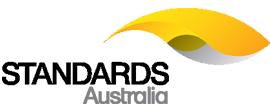
(Article first Published on: eco-business.com | November 4, 2014)
Demand for renewable energy in Asia is set to grow, and in this fast-growing landscape, utilizing the best RE technology can help save the day! Get it touch with us, visit www.eco.ph
From ultra-fast-charging batteries in Singapore to solar farms in Thailand, demand for and use of renewable energy is set to rise in fast-growing Asia.
Industry leaders speaking at the Asia Clean Energy Summit note that with such growth, business opportunities are emerging across all aspects of the renewable sector from procurement and construction services to sensors for data analytics.
Bernard Blez, senior vice president of R&D at French utility firm GDF Suez, noted that for the next ten years, growth in Asia will account for 65 percent of growth in energy consumption worldwide. The push by many Asian governments to improve air quality by switching from coal to gas and renewables is another key driver, he said.
Utility firms will have to respond to the rise of renewables in the region by working out how to rapidly develop centralised power plants, as well as come up with new business models for decentralised, distributed power generation, added Blez.
Fellow panellist Dr. Bartosz Wojszczyk, chief innovation officer at the Philippines’ largest electricity distributor Meralco, said the growth of renewables would occur “whether we want it or not; the question is how do we make this attractive in a controlled way.”
The Philippines, Wojszczyk explained, faces plenty of power-related challenges such as dispersed islands, typhoons and monsoons. Furthermore, some 30 percent of its population still lacks access to electricity. In 2015, there is likely to be a power generation deficit. “Solar and wind will probably be a big opportunity for us,” he said.
Bullish on wider energy sector
Panellists also identified other business opportunities in the wider energy sector.
Manish Kasliwal, head of the smart energy business incubation centre at technology services provider NEC APAC, noted that in the commercial and industrial sector, users were still struggling to map their energy usage patterns and work out how to control energy consumption.
Start-ups could tap and analyse this data, learn from it, and implement those lessons as a service to bigger enterprise, he suggested.
Micro-grids for islands and remote areas were also a potential area. For instance, many islands in the Philippines rely on pricey diesel generation at US$0.40 to $0.50 per kilowatt-hour and conventional centralised power generation would require expensive transmission lines to remote parts of Australia. Renewable energy would be cost-competitive in both places, said panellists.
New technologies for energy storage were another. Where renewable energy is variable or intermittent, such as solar or wind, storage is needed to smooth out minute-to-minute fluctuations or to shore up power for later use.
To test-bed the development and integration of such technologies, Singapore’s Nanyang Technological University is setting up a demonstration micro-grid at the offshore island of Semakau to integrate solar, wind, and tidal generation with more experimental energy storage and power-to-gas technologies.
Asia leads in solar energy
Asia is also leading in the development of solar photovoltaics, said Dolf Gielen, director at the International Renewable energy Association.
In 2013, China added 13 GW of solar capacity while India added 1 GW – enough to power some 250,000 four-room flats.
And Singapore and other countries in the region are seeing the rise of new business models.
Online solar marketplace SolarPVExchange, launched here in June, consolidates information from more than 20 solar installers to help potential buyers in Singapore and Malaysia to estimate the effectiveness and cost of installing solar panels.
Managing director of integrator Phoenix Solar, Christophe Inglin, said solar leasing – where users do not own the panels but leases them from a company that sells them electricity at favourable rates - is just a stepping-stone for many more business models to come
Others might include crowd-funding, which would function much like a bond that pays interest to retail investors; and a car-leasing model in which the manufacturers themselves lease solar panels and systems, he said.
But the key is to eliminate feed-in tariffs and let renewables be cost-competitive on their own. In Singapore there are no subsidies or feed-in tariffs where government agencies pay producers a favourable rate for solar energy, while in the Philippines solar is competitive against expensive diesel generation. “Assuming we don’t need subsidies, market innovation can take place,” Inglin added.
And the most important thing that governments can do to encourage the growth of renewables is “clarity, clarity, clarity” of incentives and policies, said Maxine Ghavi, head of the solar initiative at power and automation firm ABB.
Too often, fossil fuels are subsidised and electricity prices regulated so there is no push for users to transition to renewables, she said.







